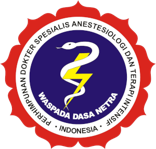Meta-Analysis of Higher PEEP Strategies' Effects on Mortality Rates and Inflammatory Mediators in Patients with ARDS: A Perspective Review on Patients with Severe COVID-19-Associated ARDS
Abstract
Objective: This review aimed to evaluate the effect of higher PEEP in patients with severe COVID-19-associated ARDS.
Method: This meta-analysis included randomized controlled trial (RCT) studies to assess the mortality rates, barotrauma events, and inflammatory mediators modulation due to higher PEEP strategies. The pooled effect of the mortality rates and barotrauma events were presented as risk ratios (RR) with 95% confidence of interval (CI) using random-effects model (REM) or fixed-effects model (FEM).
Results: We identified twelve RCTs comparing higher versus lower PEEP in ARDS patients. There was unsignificant result in overall mortality rates group [RR=0.94,95%CI(85,1.03),p=0.21] but not in mortality after positive response of oxygenation group [RR=0.88,95%CI(0.81,0.95),p=0.002] in higher PEEP group. In terms of patients without positive response of oxygenation, higher PEEP group had significantly higher mortality rates [RR=1.07,95%CI(1.00,1.15),p=0.06]. Higher PEEP significantly reduced the mortality rates in ARDS patients with PaO2/FiO2<150 mmHg [RR=0.867,95%CI(0.74,1.00),p=0.04] instead of patients with moderate ARDS (PaO2/FiO2 ≥150 mmHg) [RR=1.12, 95%CI(0.85,1.47), p=0.44]. There were no differences in overall barotrauma events [RR=1.03,95%CI(0.78,1.36),p=0.85] between higher and lower PEEP group. The use of higher and lower PEEP also contribute to the modulation of inflammatory mediators including TNF-α, IL-6, IL-1RA, and IL-8.
Conclusion: Higher PEEP could reduce the mortality of patients with ARDS who responded to the oxygenation. Higher PEEP does not increase the risk of overall barotrauma events. Higher PEEP can modulate the inflammatory mediators.
Keywords
Full Text:
PDFReferences
1. Matthay MA, Zemans RL, Zimmerman GA, Arabi YM, Beitler JR, Mercat A, et al. Acute respiratory distress syndrome. Nat Rev Dis Prim. 2018;5(1).
2. Li Bassi G, Suen JY, Dalton HJ, White N, Shrapnel S, Fanning JP, et al. An appraisal of respiratory system compliance in mechanically ventilated covid-19 patients. Crit Care. 2021;25(1):1–22.
3. Ibarra-Estrada MA, García-Salas Y, Mireles-Cabodevila E, López-Pulgarín JA, Chávez-Peña Q, García-Salcido R, et al. Use of Airway Pressure Release Ventilation in Patients with Acute Respiratory Failure Due to COVID-19: Results of a Single-Center Randomized Controlled Trial. Crit Care Med. 2022;50(4):586–94.
4. Guo L, Xie J, Huang Y, Pan C, Yang Y, Qiu H, et al. Higher PEEP improves outcomes in ARDS patients with clinically objective positive oxygenation response to PEEP: A systematic review and meta-analysis. BMC Anesthesiol. 2018;18(1):1–11.
5. Banavasi H, Nguyen P, Osman H, Soubani AO. Management of ARDS – What Works and What Does Not. Am J Med Sci. 2021;362(1):13–23.
6. Rajdev K, Spanel AJ, McMillan S, Lahan S, Boer B, Birge J, et al. Pulmonary Barotrauma in COVID-19 Patients With ARDS on Invasive and Non-Invasive Positive Pressure Ventilation. J Intensive Care Med. 2021;36(9):1013–7.
7. Cavalcanti AB, Suzumura ÉA, Laranjeira LN, De Moraes Paisani D, Damiani LP, Guimarães HP, et al. Effect of lung recruitment and titrated Positive End-Expiratory Pressure (PEEP) vs low PEEP on mortality in patients with acute respiratory distress syndrome - A randomized clinical trial. JAMA - J Am Med Assoc. 2017;318(14):1335–45.
8. Walkey AJ, Del Sorbo L, Hodgson CL, Adhikari NKJ, Wunsch H, Meade MO, et al. Higher PEEP versus lower PEEP strategies for patients with acute respiratory distress syndrome: A systematic review and meta-analysis. Ann Am Thorac Soc. 2017;14:S297–303.
9. Amato MBP, Valente Barbas CS, Medeiros DM, Magaldi RB, De Pinto Schettino G, Lorenzi-Filho G, et al. Effect of a protective ventilation strategy on mortality in the acute respiratory distress syndrome. Pneumologie. 1998;52(5):285.
10. Ranieri VM, Suter PM, Tullio R De, Dayer JM, Brienza A, Bruno F, et al. Effect of Mechanical Ventilation on Inflammatory Mediators in Patients with Acute Respiratory Distress Syndrome: A Randomized Controlled Trial. 1999;
11. Brower RG (Johns HU, Lanken PN (University of P, Maclntyre N (Duke U, Matthay MA (University of C, Hospital), Morris A (LDS, et al. Higher versus Lower Positive End-Expiratory Pressures in Patients with the Acute Respiratory Distress Syndrome. N Engl J Med. 2004;351(4):687–96.
12. Villar J, Kacmarek RM, Pérez-Méndez L, Aguirre-Jaime A. A high positive end-expiratory pressure, low tidal volume ventilatory strategy improves outcome in persistent acute respiratory distress syndrome: A randomized, controlled trial. Crit Care Med. 2006;34(5):1311–8.
13. Meade MO, Cook DJ, Guyatt GH, Slutsky AS, Arabi YM, Cooper DJ, et al. Ventilation strategy using low tidal volumes, recruitment maneuvers, and high positive end-expiratory pressure for acute lung injury and acute respiratory distress syndrome: A randomized controlled trial. JAMA - J Am Med Assoc. 2008;299(6):637–45.
14. Mercat A, Richard J-CM, Vielle B, Jaber S, Osman D, Diehl J-L, et al. Positive End-Expiratory Pressure Setting in Adults With Acute Lung Injury and Acute Respiratory Distress Syndrome. Surv Anesthesiol. 2008;52(6):272–3.
15. Talmor D, Sarge T, Malhotra A, O’Donnell CR, Ritz R, Lisbon A, et al. Mechanical Ventilation Guided by Esophageal Pressure in Acute Lung Injury. N Engl J Med. 2008;359(20):2095–104.
16. Huh JW, Jung H, Choi HS, Hong SB, Lim CM, Koh Y. Efficacy of positive end-expiratory pressure titration after the alveolar recruitment manoeuvre in patients with acute respiratory distress syndrome. Crit Care. 2009;13(1):1–9.
17. Hodgson CL, Tuxen D V., Davies AR, Bailey MJ, Higgins AM, Holland AE, et al. A randomised controlled trial of an open lung strategy with staircase recruitment, titrated PEEP and targeted low airway pressures in patients with acute respiratory distress syndrome. Crit Care [Internet]. 2011;15(3):R133. Available from: http://ccforum.com/content/15/3/R133
18. Kacmarek RM, Villar J, Sulemanji D, Montiel R, Ferrando C, Blanco J, et al. Open lung approach for the acute respiratory distress syndrome: A pilot, randomized controlled trial. Crit Care Med. 2016;44(1):32–42.
Refbacks
- There are currently no refbacks.








